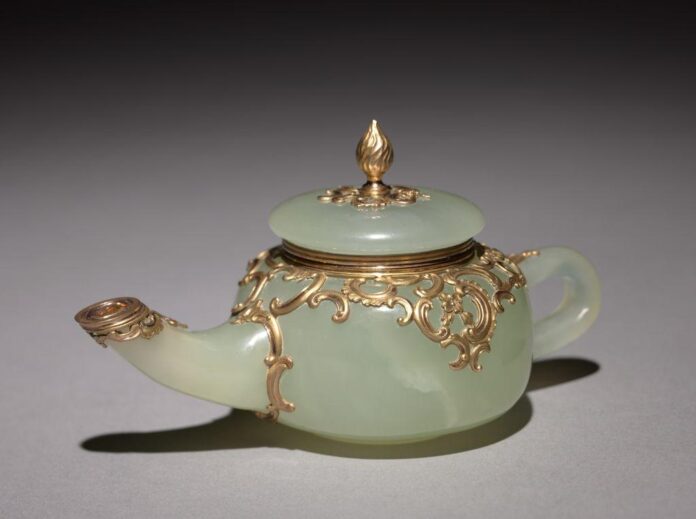A series about a jade teapot that transforms into a woman and escapes the British Museum that went viral on the Chinese version of TikTok is now being adapted into an animated film. It is intended as a political commentary that broadly aligns with calls from Chinese state media for the U.K. to return Chinese cultural artifacts in its possession.
The series has been a huge hit, with over 370 million views. It was created by two Chinese social media influencers and uploaded onto Douyin, a short video-sharing platform akin to TikTok that is owned by the same Chinese company ByteDance.
The film will expand on the series narrative in which the teapot-turned-woman breaks free and tries to return to China with the help of a Chinese journalist. Instead of focusing on just one object, multiple will escape “because they miss their motherland and return to China for the new year,” according to an announcement. The film will be written by Wang Xuewen and it was not stated whether the series originators would also be involved.
In a statement, the British Museum called attention to the fact the teapot that the Douyin series appears to be referencing is a contemporary work made in 2011 by the jade carving artist Yu Ting, who sold it to the museum in 2017.
“The British Museum has a long history of cultural collaboration in China which has resulted in a number of important exhibitions, partnerships and research projects,” a spokesperson for the museum said. “It is committed to exhibiting its Chinese collections, here at the British Museum, and across the world through our collection-sharing programs.”
“We have received no official request for the return of any objects in the collection by the Chinese government,” they added.
Calls for the British Museum to return cultural artifacts have heated up ever since it was revealed that some 1,500 antiquities and other precious objects were stolen from the museum and sold on eBay by a senior curator. None of the items that were stolen were of Chinese origin.
In an article that ran in the state-run English-language newspaper in August, objects including ritual bronzes, statues, scrolls, and “other extremely valuable national treasures” were named in a formal request for their return. The British Museum owns around 23,000 Chinese artifacts, and the article said that “a significant portion” of its overall collections were “acquired through improper channels, even dirty and sinful means.”
Chinese state media has also strongly endorsed the Douyin series. “We are very pleased to see Chinese young people are passionate about history and tradition,” said state broadcaster CCTV. “We are also looking forward to the early return of Chinese artifacts that have been displaced overseas”.
On social media, however, the series has provoked mixed reactions. While some viewers were emotionally moved by the teapot’s journey, others were skeptical of the message and suggested that historical Chinese artifacts may not have survived the Cultural Revolution if they had remained in the country.
“After escaping from the British Museum, the heroine returned to the great motherland in the East Asian depression and found that none of her brothers and sister cultural relics survived the destruction of the Four Olds [referring to pre-communist Chinese culture] and the Cultural Revolution,” suggested one commenter on a YouTube clip. “They all died tragically at the hands of the Red Guards!”
More Trending Stories:

























